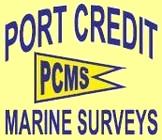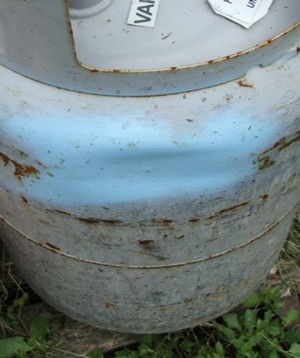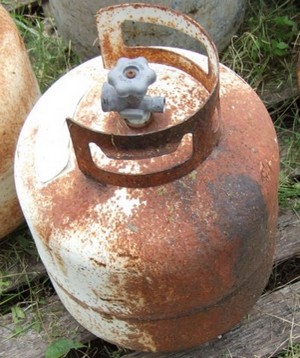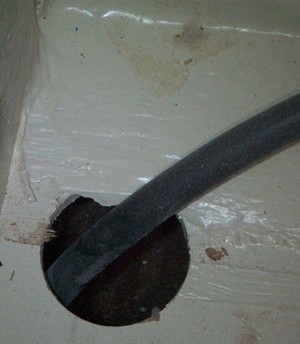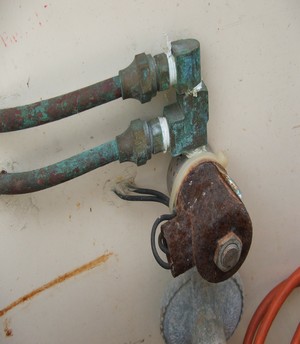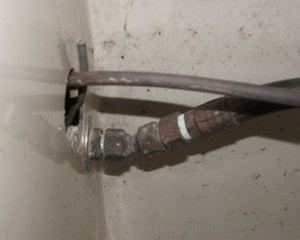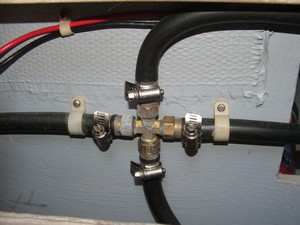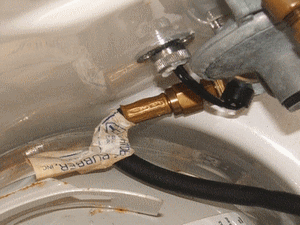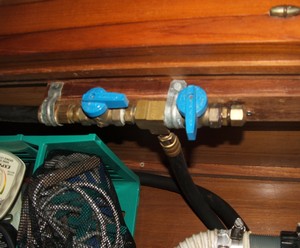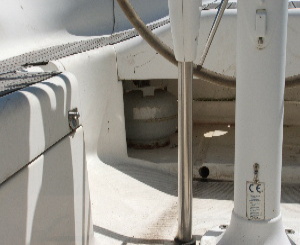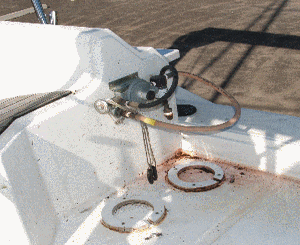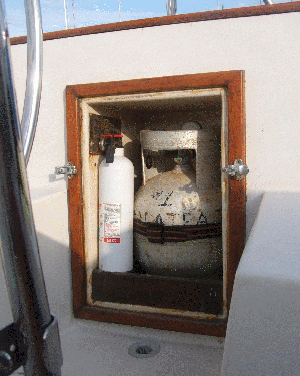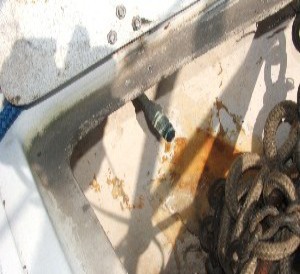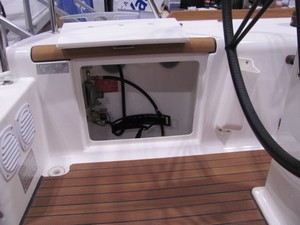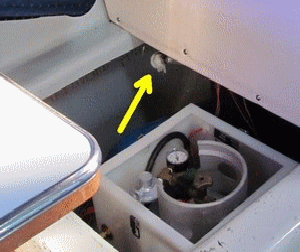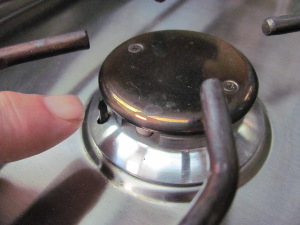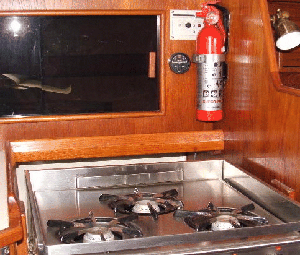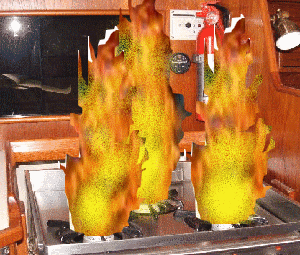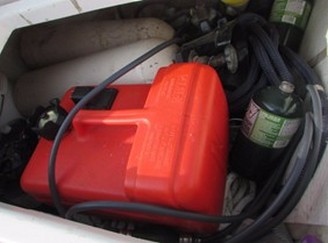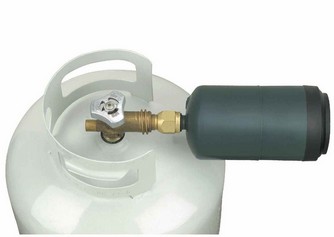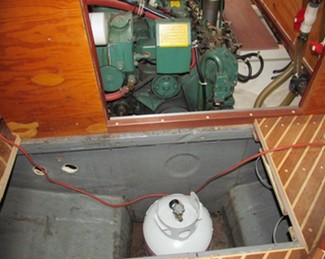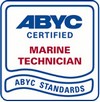| 1 . What are the relevant laws and standards
for propane installations on boats. 2 . Show how a proper propane installation should be done. 3 . I'll break down the system one piece at a time showing photos of bad examples and why they are wrong. The Law ! - Transport Canada Construction Standards For Small Vessels (TP1332E , 2010) do not even mention propane but have told me that propane systems that meet the standards of a recognized body are ok with them. How they reconcile diametrically opposed standards such as CE and ABYC® (American Boat and Yacht Council ) is beyond me (apparently it's beyond them too). Some photos below will show why I think the CE standards are dangerous. Unfortunately they are allowed to import boats into North America unchallenged. If you are in the USA, your situation is pretty much the same as your law (CFR. Title 33) makes no mention of propane systems in pleasure craft at all. To quote Charles Dickens " The law is a ass - a idiot ". The Standards - ABYC® Standard A-1 "Marine Liquefied Petroleum Gas (LPG) Systems" . All of the recommendations made below are based on ABYC® standards which I whole heartedly endorse but paraphrase in the interest of brevity. NFPA also has a recognized standard but since they are in tune with ABYC®, we'll stay with ABYC®. |
|
| A. The Good 1. Locker Drain - Propane is heavier than air so the drain hose must lead from the bottom of the locker to outside of the hull above the static waterline and have a minimum inside diameter of not not less than 1/2" (this means you must use a 3/4" throughull and hose). This drain, like the locker itself must be dedicated. It cannot be T'd into a scupper hose like many CS boats. The drain outlet may not be within 20" of any opening into the boat 2. Propane Tank - must be approved type with an OPD valve. No problem as you cannot buy or get any non-approved tanks filled anyway. 3. Controls - In order from the tank - first the pressure gauge, then solenoid shut-off, then the regulator. All such equipment must be inside the locker. Pressure gauges are often omitted by the DIY'r to save $12 but are a critical leak detection safety feature. A solenoid valve is not required if the tank can be shut off from the vicinity of the appliance, unlikely but I did see it on a 27' Vancouver sailboat. 4. The Locker must be above the waterline, top loading with a tight fitting gasketed lid that opens to the atmosphere, be vapor tight to the interior of the vessel (all apertures to be sealed) and must be used for no other purpose. ie. don't keep your anchor in there. |
 Black line from locker to appliance if the fuel line. Green line is wire from solenoid to control panel. Note that the power supply to the solenoid is not clipped to the fuel line. This done to avoid having hot conductors on the hose. |
| 5. Fuel Line - Type approved (UL21) hose or grade K or
L annealed copper in one continuous
length
from the locker to the appliance, must
be
chafe protected where it passes through
bulkheads
and secured with clips (plastic). There
must
be no other connections to this line
outside
of the locker other than at appliance
and
for your families sake, don't run it
through
an engine compartment. The photos in
the
next section will show why I don't
like metal
fuel lines approved or not. Each appliance must be supplied by it's own
line directly from inside the locker. Any
junctions must be inside the locker. |
|
| 6. Chafe protection - - Wherever the hose passes through a bulkhead
it must be chafe protected. You'll
see why
in the following photographs. |
|
| 7. The appliances - Must have a flame failure device (thermocouple)
to shut off the fuel supply if the
flame
goes out. Must not have a pilot light. Camping stoves are not
fitted with these. |
|
| 8. A pressure gauge should be installed installed on the cylinder side of the pressure regulator. This gauge allows you to quickly and easily check the system for leaks via a “leak-down test.” To conduct a leak-down test, turn on the stove or grill, then close all the burner valves, leaving the solenoid switch on. Note the pressure gauge reading, then close the tank valve – the gauge reading should remain constant for at least three minutes. If the pressure drops, then you have a leak (or leaks) and must inspect the entire system before using it again. | |
| 9. Control panel - The panel should have a shut-off switch
to activate the solenoid in the locker
a
light to show that the solenoid is
open.
and a propane fume detector alarm.
|
|
| 10. The fume detector - The panel should also be fitted with a
fume detector test switch and alarm. The
sensor (s) themselves should be mounted directly
under the appliance. Many install the sensor
in the bilge. If the fumes reach the bilge
.... it's too late. Many install the sensor
on a bulkhead under the appliance which can
leave several inches of propane to collect
before it is sensed (if it ever is). ABYC A-1, 1.5.2 Each system shall be fitted with a pressure gauge. The gauge shall read the cylinder pressure side of the pressure regulators. ABYC A-1, 1.7.2 Each appliance shall be served with a separate low pressure, regulated fuel line that shall originate within the locker. ABYC A-1, 1.7.3 A readily accessible manual or electrically operated (eg. solenoid) shut-off valve shall be installed in the low or high pressure line at the fuel supply. |
|
